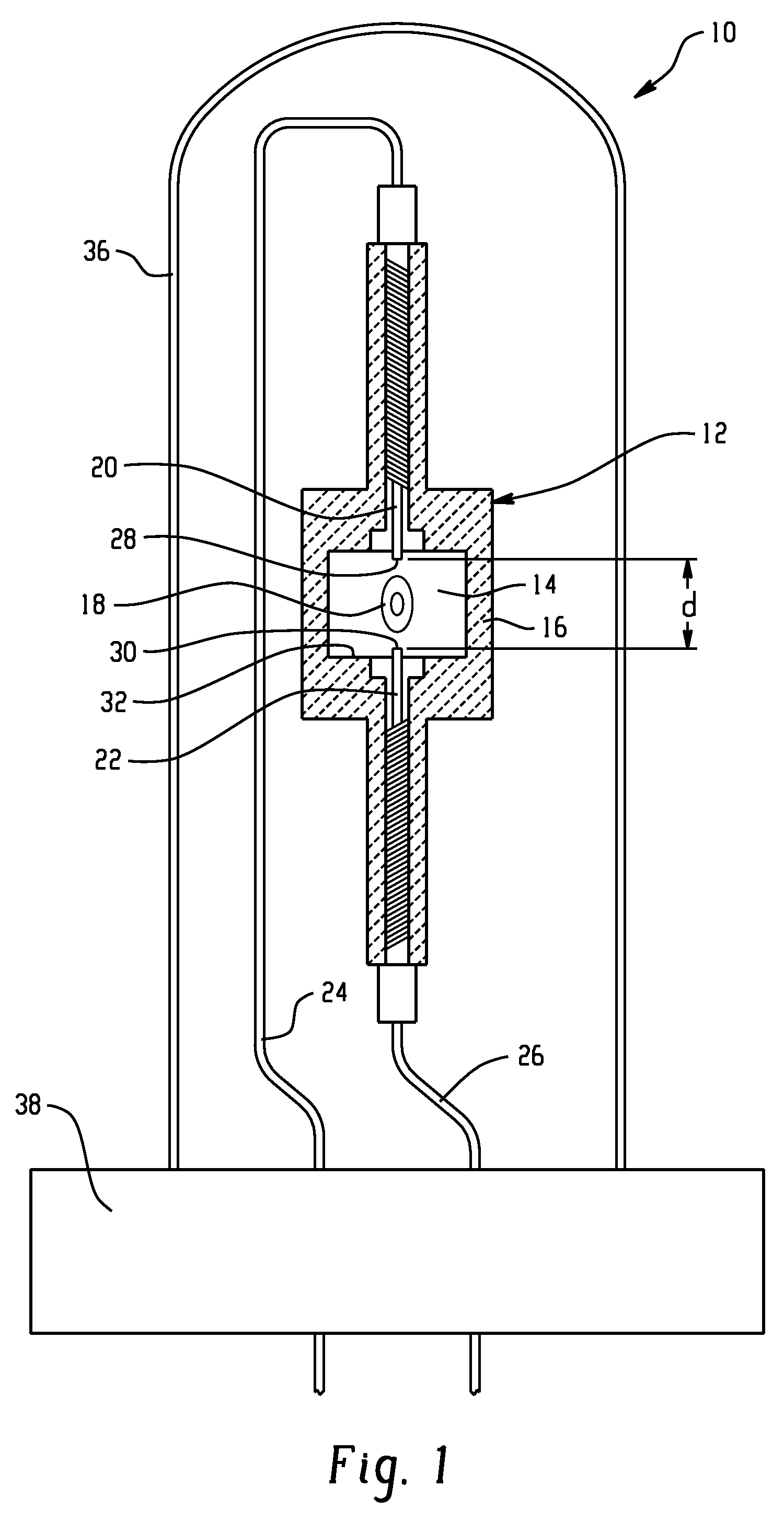Metal halide lamp with halogen-promoted wall cleaning cycle
a technology of halide lamps and halogen-promoted wall cleaning cycles, which is applied in the manufacture of electric discharge tubes/lamps, cold cathode manufacture, electrode systems, etc., can solve the problems of light output decline, achieve improved performance and lumen maintenance, and reduce wall blackening
- Summary
- Abstract
- Description
- Claims
- Application Information
AI Technical Summary
Benefits of technology
Problems solved by technology
Method used
Image
Examples
example
[0062]Arc tubes 12 were formed according to the shape shown in FIG. 1 from three component parts. The internal volume was 0.2 cm3. The lamps were each filled with a fill as shown in Table 2. The fills of exemplary lamps B, C, D, and F also contained Hg (137 μmol / cm3), NaI (107 μmol / cm3), CaI2 (38 μmol / cm3), TlI (3 μmol / cm3) Ar (12 μmol / cm3). Lamps A and E had fills similar to the exemplary lamps, but with no HgI2 or WO3.
TABLE 2TestHgI2WO3A (Control for B, C——and D)B0.04 mg—(0.4 μmol / cm3)C0.16 mg—(1.6 μmol / cm3)D—0.064 mg(1.4 μmol / cm3)E (control for F)——F 0.3 mg(0.3 μmol / cm3)
[0063]The lamps were run in a standard burning cycle (11 hrs. on followed by 1 hour off) for extended periods in a horizontal orientation (i.e., at 90 degrees to that illustrated in FIG. 1) on a ballast at 70 W.
[0064]Table 3 shows the results obtained after 100 hrs. V is the burning voltage. Lumens is the lumen output of the lamp. X color and Y color are the chromaticity X and Y, respectively, on a standard CIE (C...
PUM
 Login to View More
Login to View More Abstract
Description
Claims
Application Information
 Login to View More
Login to View More - R&D
- Intellectual Property
- Life Sciences
- Materials
- Tech Scout
- Unparalleled Data Quality
- Higher Quality Content
- 60% Fewer Hallucinations
Browse by: Latest US Patents, China's latest patents, Technical Efficacy Thesaurus, Application Domain, Technology Topic, Popular Technical Reports.
© 2025 PatSnap. All rights reserved.Legal|Privacy policy|Modern Slavery Act Transparency Statement|Sitemap|About US| Contact US: help@patsnap.com



